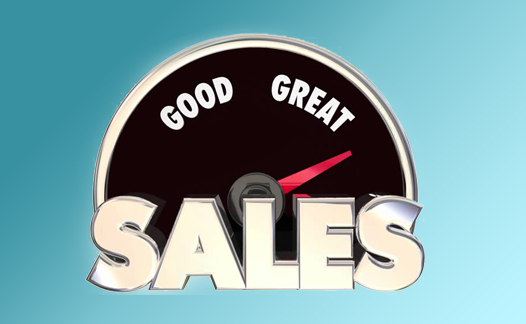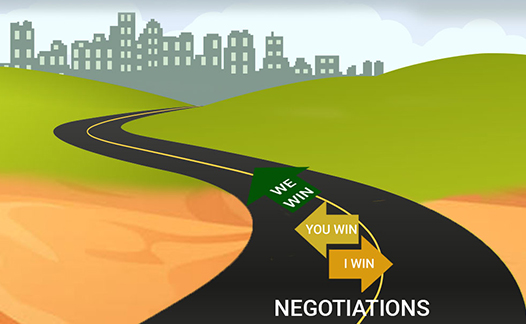Take the guesswork out of your sales forecasts
Which one of these best describes your sales forecasts?
- Sharp-as-laser predictions
- Guesstimates
- Numbers on hopes.
Speaking of forecasts, anyone with some vintage in sales would relate to those “awful 48 hours” that Mathew Bellows talks about in his article Stop Guesstimating Your Sales Forecasts in Harvard Business Review May 17, 2012.
Pipeline presentation: Those awful 48 hours
Mathew Bellows refers to those two days that precede a pipeline presentation when all hell seems to break loose. Days and weeks have been spent in frenetic activity when you collate individual and team projections, check on current deals in progress, new deals picked up, likely closure dates and closure probability percentages. Your people are diligently managed and compensated for consistency and predictability. You are on top on all major deals. Sales training and a market leading Customer Relationship Management (CRM) are also in place. There was no shortage of weekly updates. Yet for those 48 hours, none of this seems to help and you end up giving your bosses what can at best be an informed guess
When did forecasting sales – a number widely regarded as most measurable, one that shows up in all reports every week, month, quarter and year - become such a daunting problem?
Two challenges of sales forecasting
Bellows traces the roots of the sales forecasting problem to two basic challenges:
- Organisational distance - As the sales manager goes higher in the organization, the less connected he is with the deals happening below. That makes him dependent on projections churned out by individual sales reps with possible inaccuracies and deficiencies
- Weaknesses in system support - Second, the CRM systems in most companies are not a big help when it comes to gathering data about upcoming sales opportunities. This is especially true of B2B selling, where quite often the projections picked up from the CRM turn out to be a dated compilation of enquiries which may be dated. A forecast is created applying some intelligent guesswork on the projections. “It’s really just the opinions, guesses, estimates and suppositions of your sales team” says Bellows
Three ways to beat the forecasting blues
Bellows suggests three ways in which forecasts can be made better:
- Encourage use of measurable indicators – Some Organizations have made a start with growing the inside sales team and raising the emphasis on more measurable sales channels like phone calls and emails. Also, use the CRM system as a central repository of information to dig for pointers and details
- Focus on actions and activities - Focus should shift to sales action for closure of business. Knowing the number of calls made, emails sent and visits done for closing a deal would help measuring the underlying sales data for each member of the sales force that would in turn make for more reliable forecasts
Build processes, services and tools that collect data instead of opinions. Create forecasts basis what we do instead of what we say. Help salespeople succeed instead of weighing them down with wasteful processes. Those, says Bellows, are the only ways to take the guesswork out of your sales forecasts. And improve those ‘awful 48 hours’
The HBR article on Stop Guesstimating Your Sales Forecasts in Harvard Business Review by Mathew Bellows is here
Mercuri Insights
The corporate world has always placed a premium on Sales Managers who can ‘call’ their results right. Accurate Sales Forecasts are seen as signs of predictability and dependability – traits which signify high leadership potential. It is intriguing that while champions of Sales Forecasting are rewarded disproportionately, very few Organizations take the pains to nurture Sales Forecasting as a learnable skill. This leaves many sales careers and business fortunes to chance. Need not be so!
It is easier to ‘call’ on ‘Many-enquiries-each-small’ All you need to do is to factor ‘x’ percentage of closures based on past pipeline behavior and rest of the plan falls in place automatically. It is when there are large value deals in pipeline that the ‘call’ gets more complex as it involves decisions on where you should invest your efforts to accomplish the desired outcomes. For this to happen, you should have a good idea on the relative probability of success for each deal.
This is where Mercuri International’s ‘Tactical Checklist Method’ can be of help. The tactical checklist can be used to appreciate how likely it is that a deal will result in closure. This will involve two steps:
- Draw up a set of questions such that each “yes” response implies a higher prospect of your winning the order.
- Then group questions and assign weights basis likely impact on deal outcome after evaluating the status of each enquiry.
The composite score of weights arrived now will provide a fairly reliable measure of probability on deal outcomes. For more reading on how this can be done, read the Mercuri Insight document ‘How can you forecast your large order sales pipeline better?’
| Keywords | ||
| Mercuri International | Annotations | Sales forecasting |
| Sales Management | Tactical checklist | Sales pipeline |
In Essence annotates published articles of value to the Sales Community. It is an effort to bring insights within reach of Sales Leaders in ways that enable quick assimilation and action. Mercuri International acknowledges the authors and the publications for the insights.










We welcome your comments on "Increase Sales using Incremental Commitments"